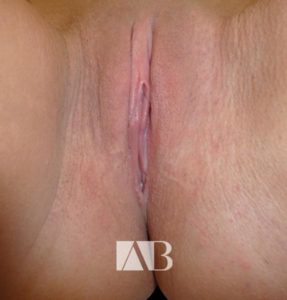BAM25 CAPSCO Anca Breahna Presentation on Labiaplasty Surgery
Here is the Bonus Content for the presentation at BAM25 conference at Chelmsford UK.
Chester Plastic Surgeon Ms Anca Breahna made a presentation at the May 2025 BAM CAPSCO Conference in Chelmsford UK based on an Audit of her 5 year series of 125 Labiaplasty surgeries.
The Rise in Labiaplasty Surgery – Key Labiaplasty Statistics
Surgical statistics from ISAPS and ASPS indicate Labiaplasty surgeries are increasing.
United States
-
In 2023, the American Society of Plastic Surgeons (ASPS) reported 10,592 labiaplasty procedures, marking a steady rise since 2015.
-
The Aesthetic Society documented 18,120 labiaplasties in 2023, reflecting a 67% increase from 2019.
-
Between 2015 and 2020, labiaplasty procedures in the U.S. grew by over 40%.
United Kingdom
-
In 2022, the British Association of Aesthetic Plastic Surgeons (BAAPS) reported 907 labiaplasty procedures, contributing to a 102% overall rise in cosmetic surgeries compared to the previous year.
-
Daily Online searches for Labiaplasty in the UK have risen 66% from 2020 to 2025, indicating growing public interest.

Four Factors Contributing to the Rise in Labiaplasty
1. Changes to Aesthetic Preferences and Body Image
-
Approximately 70% of women undergoing labiaplasty cite aesthetic reasons, such as dissatisfaction with the appearance of the labia minora, as their primary motivation.
-
The prevalence of tight-fitting clothing and the rise in day to day wearing of athleisure wear (SweatyBetty, Lululemon, Gymshark) has heightened awareness of labial appearance, leading some women to seek surgical solutions for concerns like the risk of “camel toe.”
2. Functional Discomfort
-
Around 80% of patients report experiencing physical discomfort—such as chafing or irritation during activities like cycling or intercourse—prior to undergoing labiaplasty.
-
Post-surgery, many women report significant relief from these symptoms, enhancing their quality of life.
3. Psychological Well-being
-
Studies indicate that labiaplasty can positively impact mental health, with 95% of women expressing satisfaction post-procedure and reporting improved self-esteem and body image.
4. Reduced Stigma and Increased Awareness
-
The decreasing stigma surrounding female genital cosmetic surgery has empowered more women to consider and pursue labiaplasty.
-
The rise of virtual consultations and online information has made it easier for individuals to explore and understand the procedure.
Anca Breahna Labiaplasty Surgery Audit – 5 years 2020 to 2024
Total cases performed: 125
Procedure types:
- Trim: 75 cases (60%)
- Wedge: 50 cases (40%)
- Clitoral hood Reduction: 82 cases (65.6%)
- Combined majora-minora: 5 cases
Follow ups: 2 weeks – 22 months
- > 6 weeks: 111 patients (88%)
Key Challenges of Labiaplasty Surgery for Surgeons
Managing Patient Expectations
Which patients will be difficult postoperatively?
- Complex anatomical variations
- Anterior labial folds
- Bulky labia minora and CH
- Excess perineal tissue
- Atrophic labia
Revisional surgery policy – when to charge or not charge for Revisions
Protocol for Labiaplasty Surgery under LA (Local Anaesthesia)
- A very good NURSE to support and reassure the patient
- EMLA cream 20-30 min before
- 1 g TXA orally
- 1tb Co-Amoxiclav
- Lithotomy in padded stirrups
- LA : Lignospa 2% with 1:80,000 epi
- 30 gauge needles SLOW injection
- Low temp cauthery
- Marcaine 0.5% at the end
Protocol for Labiaplasty Surgery under GA (General Anaesthesia)
- Day case
- Preop EMLA , iv Co-Amoxiclav , 1g TXA
- LA lignospa and Chirocaine Postop Paracetamol, 10 tb Codeine and 8 tb TXA (1g TDS 2/7
- Tight high raise knickers + thick Sanitary pad
- Ice packs
- Bed rest 48 hrs
- Rest at home 2/52
- Return to sports, intercourse 6/52
Protocol for Labiaplasty Post-Op
- 1g Paracetamol QDS, 10 tb Codeine and 8 tb TXA (1g TDS 2/7)
- Bactroban cream 7 days
- Avoid NSAIDs 10 days
- Tight high raise knickers + thick Sanitary pad
- Ice packs
- Bed rest 48 hrs
- Work, driving 2/52
- Sports, intercourse 6/52
- Fup: phone call @48hrs
- FTF 2w, 6w and 3m
Elements of an Optimal Labiaplasty Patient Consultation
- Ask Lots of Questions
- Listen Closely to the Answers
- Educate the patient about different techniques and combinations (Hybrid labiaplasty)
- Perform a Thorough Physical Examination
- Agree on a surgical plan that manages Expectations
- Make sure Consent is thorough, and good notes are taken
- Potential complications are covered in detail
- Outline your Revision policy
Perform a Physical Exam of the Patient using a Mirror
- Use a hand held mirror to explain the anatomy and surgery
- Standing and lithotomy
- Clitoris
- Clitoromegaly
- Clitoral hood excess
- Labia minora
- Sagital excess
- Anterior folds
- Perineal excess
- Tight fourchette
- Pigmentation
- Introitus
- Perineal body (scarred)
- Distance to hymenal ring
- Vagina
- Prolapse (Valsalva)
- Kegel strength
Key Anatomical Challenges for a Successful Labiaplasty Result
- Double fold/ anterior labial fold
- Bulky labia minora and clitoral hood
- Posterior confluence
- Atrophic labia
- Deflation of labia majora
Who is an Ideal Candidate for Wedge Surgery?
- Thick labia
- Sagittal excess
- Prominent clitoral hood
- Non smokers
- Compliant with post op rest protocols
Who is an Ideal Candidate for Trim Surgery?
- Very thin or extremely thick
- Narrow clitoral hood
- Hyperpigmentation
- Unilateral
- Smoking/ vaping
- Fast recovery
Managing Specific Patient Concerns as a Candidate for Labiaplasty
- Pigmentation
- Posterior perineal tissue
- Is the Outcome the patient wants achievable given the anatomy?
Tips for Managing Patient Expectations – Tucked In or Tidied Up ?
- Is maximal tuck a priority and can it be achieved?
- Does the patient want a Tucked In (slit like result) or a Tidied up result (a more “natural” look) .
- Labias come in wide variety of shapes and sizes. See the articles about the Great Wall of Vulvas. and Labia Liberation / Vulva Anxiety.
- BDD and genital self-image must be considered when performing Labiaplasty surgery.
Tips for Using the Wedge Technique
- Markings – easy to close
- Protect posterior artery
- Wedge placement
- De-epithelialisation
- De-bulk submucosa
Wedge Resection (Alter 1998)
- Preserves natural edge
- Shorter scar
- Less scalloping
Extended Wedge (Alter 2008)
- Narrows clitoral hood
- Manages the anterior folds
- Less dog ears
Potential Complications of Wedge Technique
- Scalloping
- Asymmetry
- Residual redundancy
- Agglutination
- Penis deformity/ Amputation
- Dog ears
When and Why I would use the Trim Technique Labiaplasty
- Adaptable to most sizes and shapes
- Deals with antero-posterior elongation
- Thin or very thick labia
- Unilateral elongation
- Dehiscence – no revision
- No web release
- Hyperpigmentation
- Effects of Nicotine – Patient is a Smoker
- Patient wants Faster recovery (back to work reasons)
Key Reasons for Performing a Revision Labiaplasty
- Wedge dehiscence / notching/ fenestration
- Bulky clitoral hood after trim labiaplasty
- Bulky labia minora after wedge
- Small dog ears
- Asymmetry/ anterior labial fold/ mismatch
- Labia majora skin laxity
- Excess perineal tissue posterior to introitus
Labiaplasty Marketing Tips – How to be Found for Labiaplasty Surgery
- Fewer enquiries from social media because Labiaplasty photos can’t be posted so they definitely take a deep dive into your website
- Realself – allows photos of genitalia and patient stories
- Patient referrals (Word of Mouth) because the buzz goes out there that you do these procedures
- Less referrals from GPs and Gynaecologists because I find that they don’t condone this procedure
- Hopefully with the new generation of gynaecologists will see more referrals
Pearls of Labiaplasty Surgery
- Tailor the Technique: Choose the right surgical method (wedge, trim, or hybrid) based on each patient’s anatomy and goals. Avoid a one-size-fits-all approach.
- Don’t Overdo It: Preserve enough labial tissue to maintain function, protection, and natural appearance.
- Respect the Nerves: Work carefully near sensitive areas to avoid damaging sensation.
- Check Mental Health: Screen for body image concerns or unrealistic expectations before offering surgery.
- Give Clear Consent: Explain all risks, healing time, and what results are realistic—verbally and in writing.
- Plan the Aftercare: Provide thorough post-op instructions, schedule follow-ups, and manage healing issues early.
- Set Realistic Expectations: Use real photos, props, diagrams, or mirrors to explain what’s achievable.
- Stay Within the Rules: Follow advertising, consent, and safety standards
Anca Breahna’s Lessons Learnt from her 5-year Labiaplasty Surgery Series & Audit
I now offer patients Trim, Wedge, and Hybrid techniques depending on anatomy and desired results, and I prefer using the Wedge technique.
- Set realistic expectations
- Screen psychosocial factors
- Choose the right technique
- Avoid over-resection
- Protect the vascularity
- Optimise the consent
- Plan the aftercare
- Stay within the ethical rules and guidelines (no one under 18 etc)
Recommended Book about Labiaplasty Surgery
Female Cosmetic Genital Surgery: Concepts, Classification, and Techniques
This is a comprehensive resource that delves into the evolving field of aesthetic vulvovaginal surgery. The book addresses the increasing interest in female genital rejuvenation, providing detailed insights into various procedures aimed at enhancing the appearance and function of the female genitalia. It covers applied anatomy, classifications of anatomical variations, and step-by-step guidance on procedures such as labiaplasty, clitoral hood reduction, hymenoplasty, perineoplasty, and vaginoplasty. The text also explores cultural perceptions of genital aesthetics and introduces advanced techniques like the O-Shot® and vaginal rejuvenation using fractional erbium laser and transcutaneous temperature-controlled radiofrequency. With over 350 color photographs, detailed surgical illustrations, and narrated video clips, this book serves as an essential guide for surgeons seeking to expand their expertise in female cosmetic genital surgery.
Key Medical References for Labiaplasty Surgery
Several authoritative sources and publications shape the medical understanding and practice of labiaplasty surgery, including foundational work by Dr. Gary J. Alter and comprehensive reviews of surgical techniques and outcomes.
Dr. Gary J. Alter’s Contributions – See https://www.labiaplastyrevisionsurgeon.com/
- Dr. Gary J. Alter is widely recognized as a pioneer in labiaplasty and genital reconstructive surgery, particularly for developing and refining the central wedge resection technique. He has published extensively on labiaplasty, including both original techniques and management of complications or revisions24.
Notable publications by Dr. Alter include:
- “Labia Minora Reconstruction Using Clitoral Hood Flaps, Wedge Excisions, and YV Advancement Flaps“ (Plastic and Reconstructive Surgery, 2011), which details reconstructive options following complications or unsatisfactory results
- “Aesthetic labia minora and clitoral hood reduction using extended central wedge resection“ (Plast Reconstr Surg, 2008), which describes his innovative surgical approach
- Book: Reconstructive and Plastic Surgery of the External Genitalia (co-editor), a comprehensive reference on genital surgery (1998)
Systematic Reviews and Classification Systems
- A key systematic review, “Vaginal labiaplasty: current practices and a simplified classification system for labial protrusion“ (Plast Reconstr Surg, 2015), summarizes the diversity of labiaplasty techniques and introduces a unifying classification for labial protrusion. This review analyzes outcomes, complications, and patient satisfaction across various methods, including wedge resection, deepithelialization, direct excision, and others
- The review highlights that patient satisfaction with labiaplasty is high (94–100%), but practices remain diverse, and standardized guidelines are still needed




 Ms Anca Breahna, PhD, MSc, FEBOPRAS, FRCS (Plast) is a highly regarded Consultant Plastic Surgeon specialising in the field of Aesthetic and Reconstructive Plastic Surgery. Anca performs a range of
Ms Anca Breahna, PhD, MSc, FEBOPRAS, FRCS (Plast) is a highly regarded Consultant Plastic Surgeon specialising in the field of Aesthetic and Reconstructive Plastic Surgery. Anca performs a range of